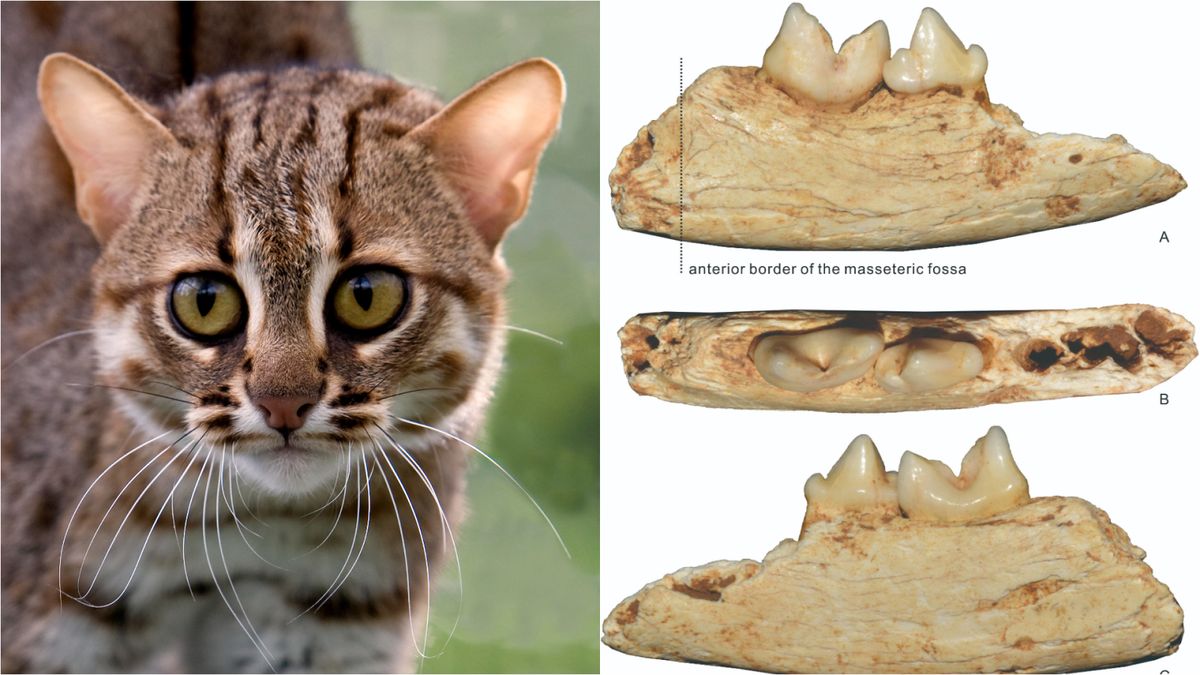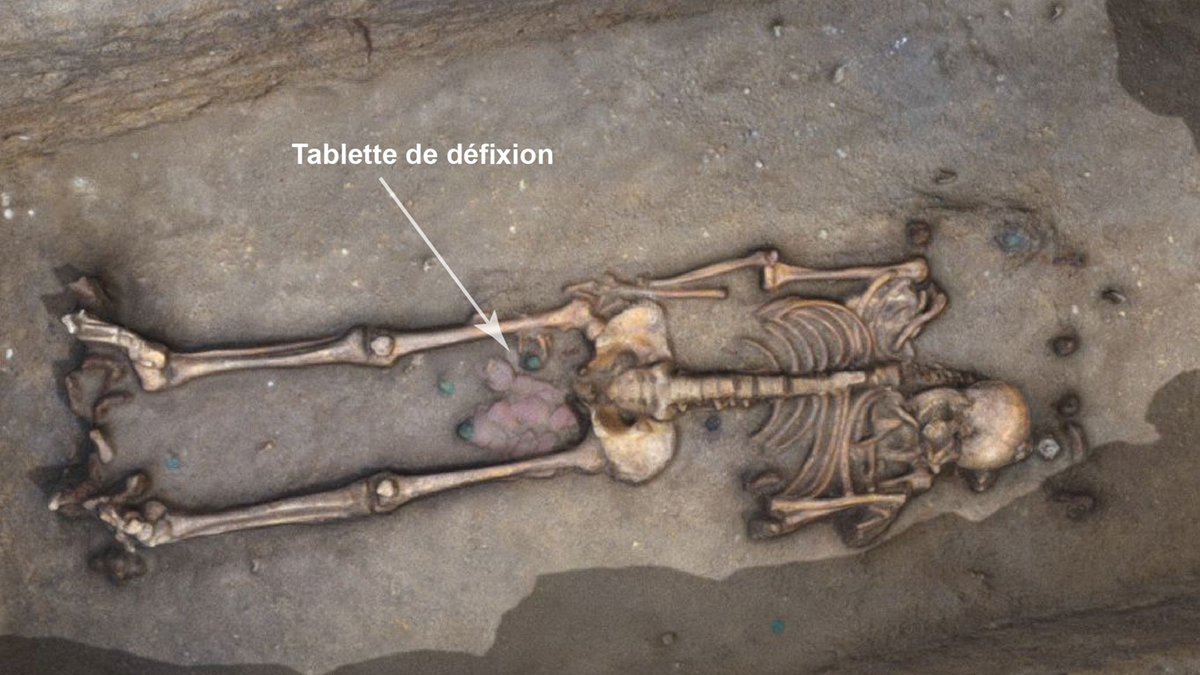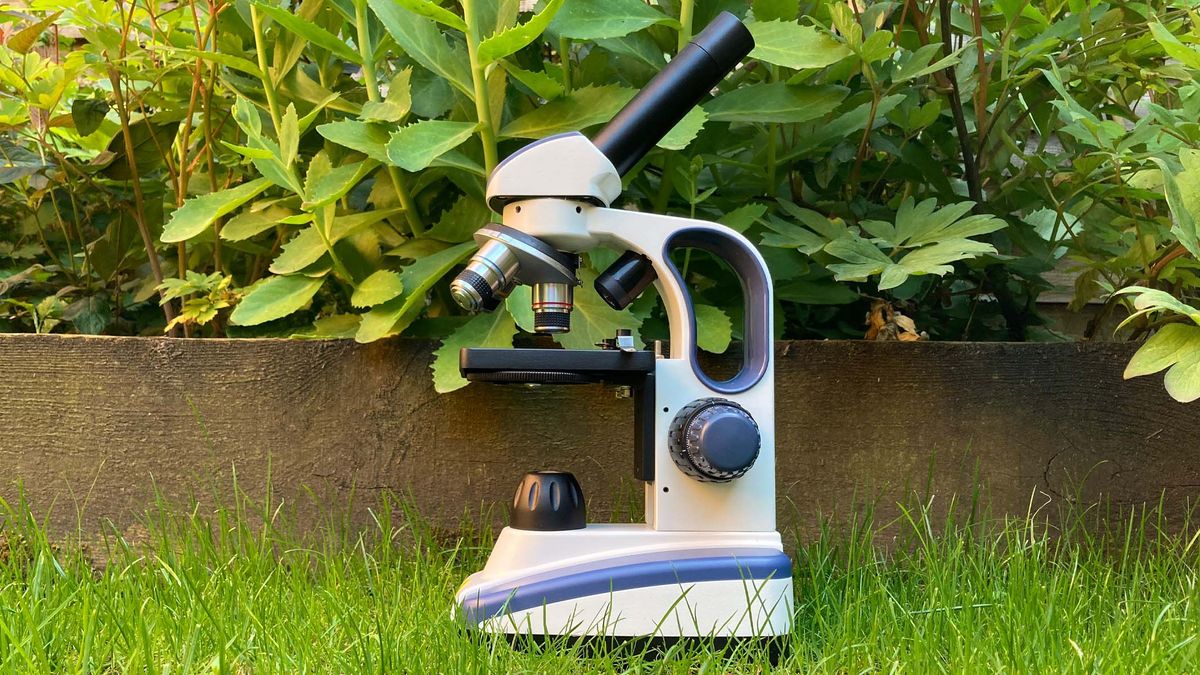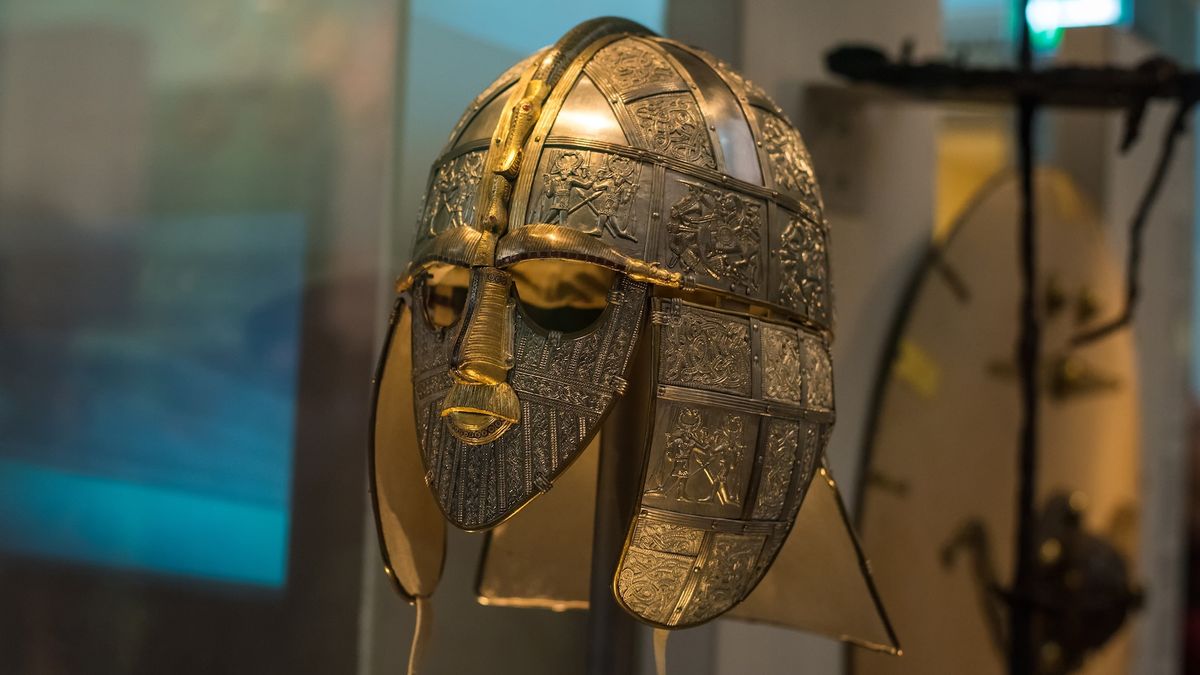Researchers in China have found the remains of a cat that was so small it could have nestled in the palm of your hand. The fossils were discovered deep within a cave where early humans lived.
The pocket-size feline is a newfound species, Prionailurus kurteni, which the scientists described in a study published Nov. 19, 2024 in the journal Annales Zoologici Fennici. The researchers believe that the extinct animal, which could date as far back as 300,000 years, may be the smallest cat ever found.
The newly identified species is part of the leopard cat genus Prionailurus, a family of wild cats that still exists today in South Asia. While most modern-day leopard cats are closer in size to domestic cats — which reach average lengths of 28 inches (70 centimeters) and weigh at least 4.4 pounds (2 kilograms) — the new species was more diminutive.
“This cat is clearly smaller than a domestic cat. It is comparable to the smallest living cat, [at around] 1 kilogram [2.2 pounds],” lead author Qigao Jiangzuo, a researcher at the Chinese Academy of Sciences Institute of Vertebrate Paleontology and Paleoanthropology, told Live Science.
Related: 35,000-year-old saber-toothed kitten with preserved whiskers pulled from permafrost in Siberia
Today, the smallest living wild cat species are the black-footed cat (Felis nigripes) and the rusty-spotted cat (Prionailurus rubiginosus), which are about 13.7 to 20.4 inches (35 to 52 cm) and 13.7 to 18.9 inches (35 to 48 cm) long respectively. Based on the newfound species’ fossilized remains, the researchers estimated that the extinct feline was roughly the same size, or possibly smaller, than both the modern-day species, estimating that it measured between 13.7 and 19.7 inches (50 cm), Jiangzuo said.
Clues to the life and size of this miniature feline came from a single, fossilized fragment of its lower jawbone, complete with two teeth, which was discovered in a palaeontological hotspot in eastern China called Hualongdong Cave.
“Cats are common elements in the Quaternary [the geological period that spans from 2.58 million years ago until today] deposit of caves. However, finding such a small cat is a surprise,” Jiangzuo said.
Fossilized remains of leopard cat ancestors are rare, because these animals tend to live in unsheltered forest environments where their bones degrade more quickly, meaning few prehistoric specimens have survived. But in the protective environment of the cave, the bones of the recently discovered specimen were preserved, giving the researchers a unique opportunity to examine them.
The prehistoric leopard cat may have wandered into the cave in pursuit of rats and mice that may have been feeding on food scraps left behind by early human inhabitants that once lived in Hualongdong Cave, the researchers told the South China Morning Post.
The inclined angle of one of the mini cat’s teeth also connects the prehistoric leopard cat to the common ancestor of domestic cats and a species called the Pallas’s cat (Otocolobus manul). While it was already known that leopard cats share heritage with these other species, the Hualongdong Cave findings provide the first fossil evidence of that link.
According to the study, the leopard cat family is the most diverse cat genus in the southern and southeastern forests of Asia, with five living species spread across the region. The cave specimen adds valuable detail to this family history: “The new species for the first time reveals the past diversity of this genus,” Jianghuo said.
This has given the researchers new data with which to investigate the origins of all cats, he added. “We plan to systematically survey the fossil cats in China and around the world, which were not well studied in the past. We hope to trace the origins and past diversity of the cat family.”















